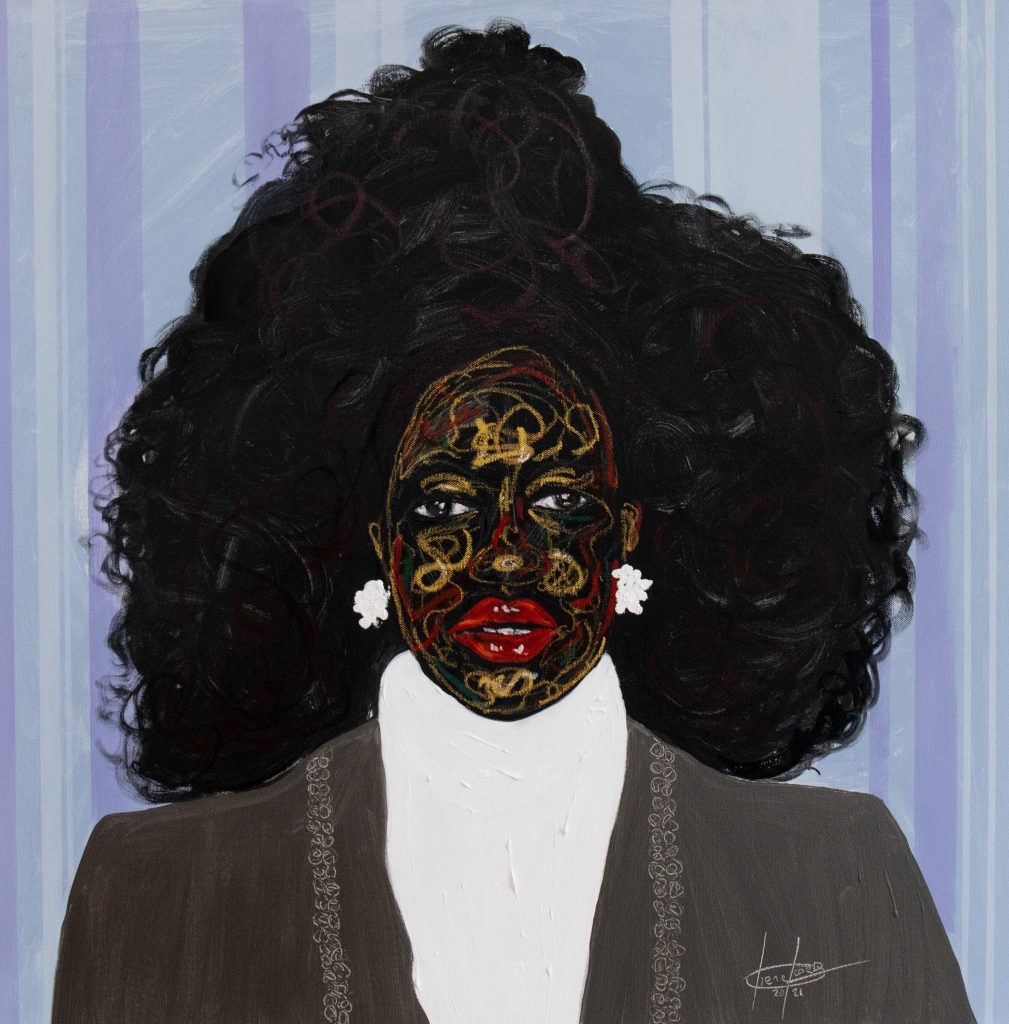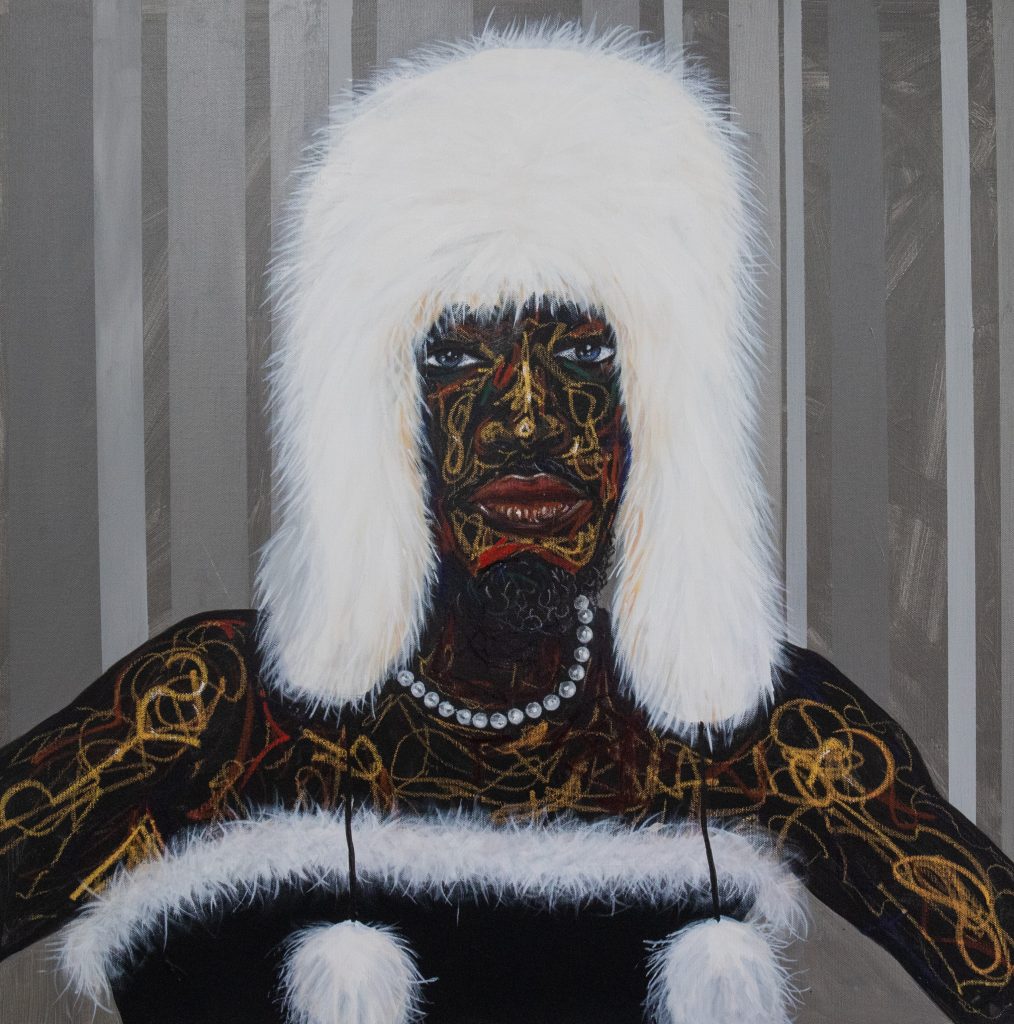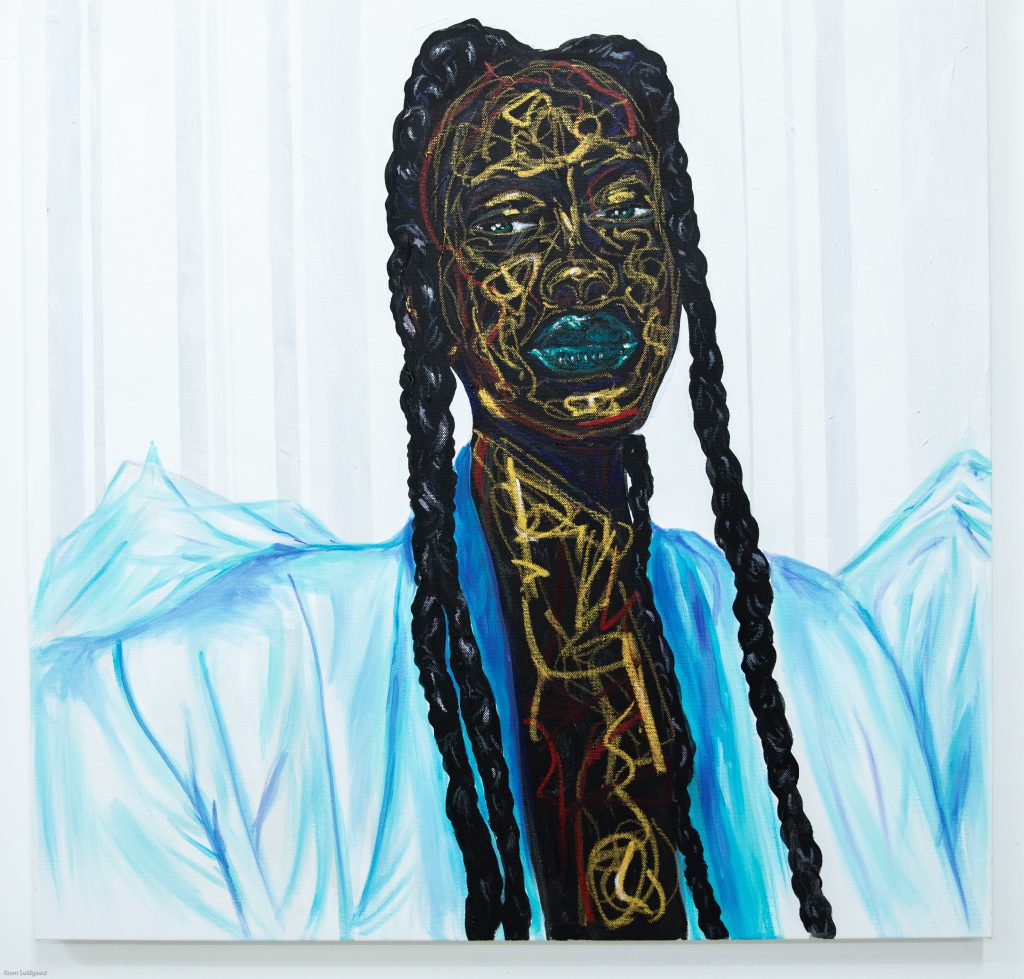Lord Ohene Okyerebour (b. 1990) is a Netherland-based figurative painter born in Ghana, West Africa. Ohene’s way of combining figurative and portraiture techniques has allowed him to develop a unique style of portrait paintings and one that is distinctly recognizable.

Tell us a little bit about yourself. Where are you from originally and when did art first enter your life?
My name is Lord Ohene Okyerebour, I am a Ghanaian from the Ashanti Region, based in the Netherlands, Amsterdam. I have been very creative and handy in my early stages which I think I inherited from my father who was an artist. Growing up, I found more interest in drawing and painting so I intended to further my art skills at the Ghanatta Collage of Art and Design (Accra -Ghana). This is where I became finalized as a landscape painter, but as the journey unfolds, I changed my perspective to portraiture and figurative.
Has your work always taken on the style it currently embodies?
My work develops every time I am working, with new elements while elaborating on new topics, subjects and also how I feel and the message I want to communicate to my viewers. So, I paint according to my inner rhythm.

What’s a day in the studio like for you?
It has always been refreshing and calm in the studio, mostly when I am alone. I experiment on new and different techniques which stands as an inspiration on my next pieces.
What’s next for you?
There is more ahead in my art career. I look to create new content and build up my stories relating to my life experience and other African artists that I have come across. That keeps me going: telling life stories and connecting to those people is everything.
From where do you draw inspiration?
I am inspired by African descents around me, their stories, their journey, their life style, their character, and their free spirits. I can easily connect to that. And most especially my father, he has inspired me a lot.

Have you always painted in the style your work currently inhabits?
Well, I have improved in my style, there hasn’t been so much changes though. This is a standout style that I am more comfortable and confident of. It gives me the freedom to express myself and the mediums I use work best.
What source material do you base your work off of?
I use acrylics, oil pastels and black 3.0 on canvas, the normal art materials and mediums which most artists use, but black 3.0 and oil pastels are key sources which make my works stand out and easily identified.
Does your work reference any Art Historical movements?
Yes, my work references the expressionism movement and the black contemporary portraiture and figuration art movement, which I think is a way of expressing our selves as Africans in the history of (Black) African descent. A voice for the world to know how we feel and to clear a perception of who we are and what we have become.

What is your process like? How do you begin a work?
I am more free in my process. I don’t go for accuracy. I capture my subject with confidence, control and self-expression. I barely follow the contour or the sketch during my process. For me, I think it’s a way of navigating on a different route which somehow leads to the same destination. Just like how life doesn’t take us on a straight path as we want, but rather shows us different experiences on a narrow road before we reach that destination. So the curvy strokes (subject) symbolize navigation and migration of one’s path. And the straight vertical strips behind them (background) represent their intended path. “Life sometimes doesn’t give us what we want”.
At the end of every interview, we like to ask the artist to recommend a friend whose work you would love for us to interview next. Who would you suggest?
I have two interesting Artist that I love their works so much and I think can stay relevant. Isshaq Ismail and Theresah Ankomah.